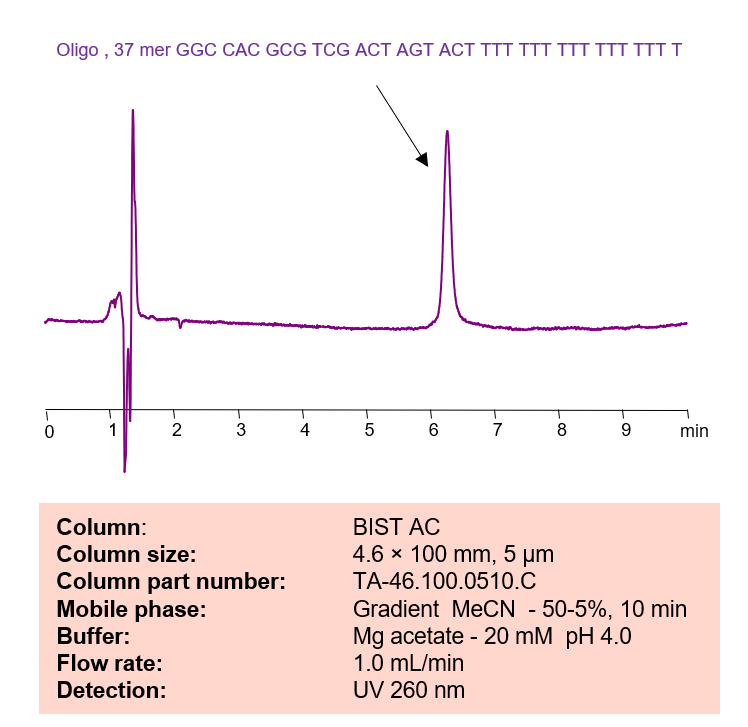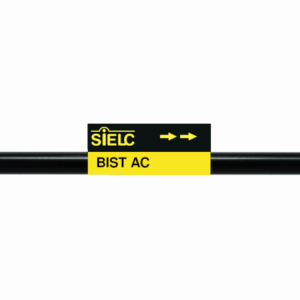Separation type: Bridge Ion Separation Technology, or BIST™ by SIELC Technologies
HPLC Method for Analysis of Oligonucleotides on BIST AC Column by SIELC Technologies

High Performance Liquid Chromatography (HPLC) Method for Analysis of Oligonucleotides
This is a single-stranded DNA molecule that is 37 nucleotides long, and its sequence is as follows:
GGC CAC GCG TCG ACT AGT ACT TTT TTT TTT TTT TTT TTT T
The sequence contains the nucleotides G, C, A, and T, which represent the four different bases in DNA. The sequence also contains a stretch of thymine (T) nucleotides at the end, which serves as a poly-T tail. This tail is often added to oligonucleotides used in PCR and other molecular biology techniques to increase their binding affinity to the target DNA sequence.
The sequence also contains a specific sequence that can be used for hybridization or amplification purposes. The sequence GGC CAC GCG TCG ACT AGT ACT is known as the “primer” sequence, and it can be used to specifically bind to a complementary DNA sequence in PCR or other molecular biology techniques.
Overall, the sequence shown is an example of a synthetic oligonucleotide that can be used in various molecular biology applications.
Using SIELC’s newly introduced BIST™ method, this oligonucleotide can be retained on a negatively-charged, cation-exchange BIST™ A column. There are two keys to this retention method: 1) a multi-charged, positive buffer, such as TMEDA formate, which acts as a bridge, linking the negatively charged dye to the negatively-charged column surface and 2) a mobile phase consisting mostly of organic solvent (such as MeCN) to minimize the formation of a solvation layer around the charged analytes. Using this new and unique analysis method, oligonucleotide can be separated, retained, and detected at 260 nm.
Please read more on oligonucleotides analysis by HPLC in our April’s 2023 newsletter.
Condition
| Column | BIST AC, 4.6 x 100 mm, 5 µm, 100 A, dual ended |
| Mobile Phase | Gradient MeCN – 50-5%, 10 min |
| Buffer | Mg acetate pH 4.0 – 20 mM |
| Flow Rate | 1.0 ml/min |
| Detection | UV 260 nm |
Description
| Class of Compounds | Oligonucleotides |
| Analyzing Compounds | Oligonucleotides |
Application Column
BIST AC
Column Diameter: 4.6 mm
Column Length: 100 mm
Particle Size: 5 µm
Pore Size: 100 A
Column options: dual ended





